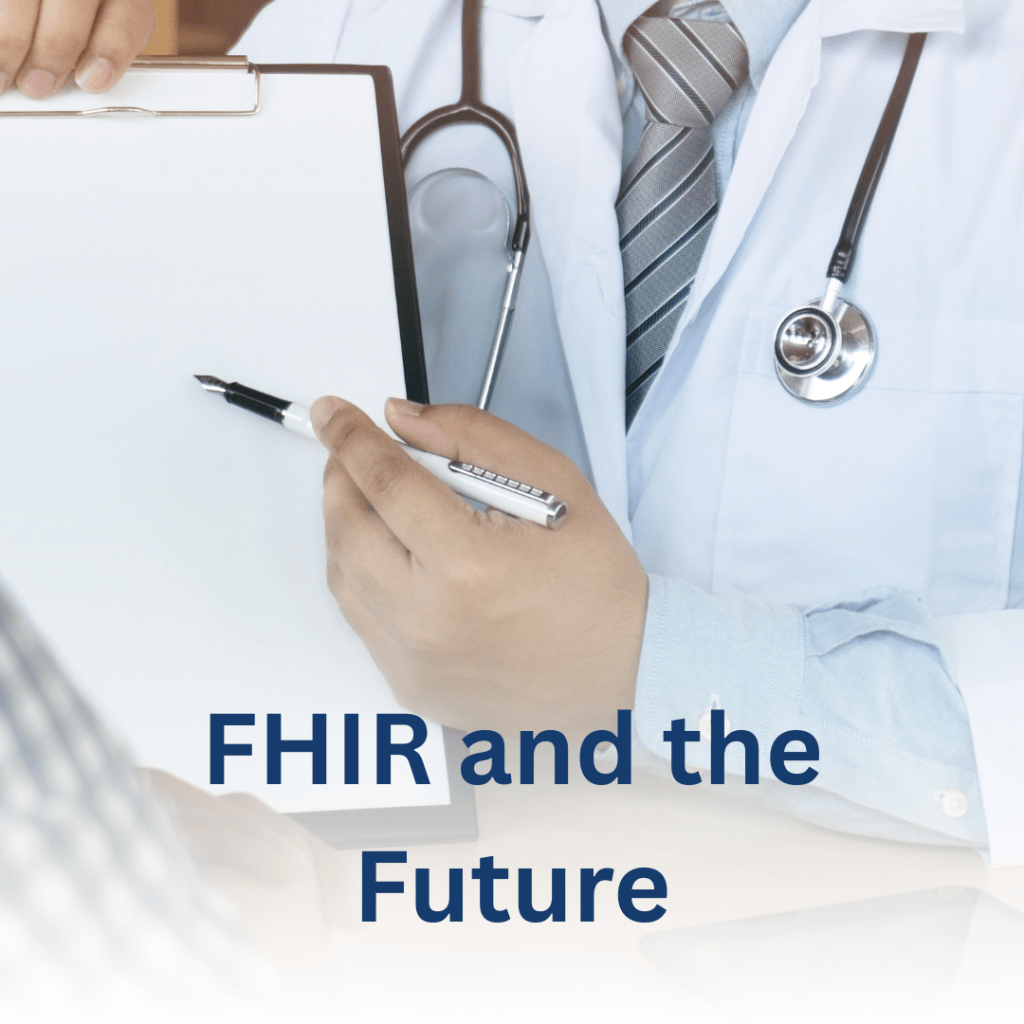
Payers must adopt Fast Healthcare Interoperability Resources (FHIR) Application Programming Interfaces (APIs) to meet the 2027 reform goals. These new federal mandates aim to eliminate the friction and fragmentation that have long plagued healthcare data exchange.
FHIR brings modern web‑based data sharing. Built on the same technology that powers today’s internet, FHIR makes it possible to share clinical and administrative data quickly, securely, and in standardized formats that systems on both ends can easily understand.
It replaces faxes and phone tags with fast, accurate, 24/7 digital exchange. Instead of chasing paperwork or waiting on hold, providers and patients gain real-time access to the information they need, reducing delays, improving outcomes, and cutting down on unnecessary costs.
Key Facts
- CMS requires FHIR-based APIs by January 1st, 2027, for PA data.
The CMS Interoperability and Prior Authorization Final Rule mandates that impacted payers (Medicare Advantage, Medicaid/CHIP, and QHPs on Federally Facilitated Exchanges) implement a fully FHIR‑based Prior Authorization API by January 2027, along with other FHIR APIs for patient, provider, and payer‑to‑payer data. - AI-enhanced FHIR tools can deliver approvals in seconds with >98% accuracy.
Emerging AI integrated with FHIR workflows has achieved accuracy rates of 98–98.5%, enabling near-instant clinical decisions (such as genomic variant interpretation or auto-filled reports) with precision matching human performance - Real-time data via FHIR reduces claim denials and manual follow-up.
Early FHIR+AI implementations are already returning 85% of prior authorization responses in near real time, with up to a 300% boost in productivity and a marked reduction in denials, phone calls, and administrative burdens.
Why FHIR Matters
FHIR is a modern, REST-based standard built on widely adopted internet protocols, such as HTTP, OAuth, and JSON/XML (with RDF support). This makes it easy to implement in today’s tech environments. It supports both JSON and XML formats, ensuring compatibility with web and mobile developers.
Crucially, FHIR lets systems talk directly, eliminating the mess of faxes and phone calls. Instead of exchanging bulky documents, systems can request or push discrete data elements (like patient demographics or diagnostic reports) via standard RESTful API calls, enabling real-time access and automation.
How It Works
- Provider Access API checks if PA is needed via CRD guidelines.
When a provider initiates a service request from within their EHR, the CRD implementation guide enables FHIR-based queries to the payer’s Provider Access API. The conduit evaluates clinical and demographic criteria in real time, returning a simple “yes/no” on whether prior authorization is required, and if so, what specific data is needed. - Documentation Templates & Rules drive completeness.
If authorization is required, the payer sends back a structured template (via the DTR guide) that defines required fields and document types. Providers automatically receive this guidance through the API, ensuring submissions are accurate and complete on the first try. - Submission & Follow-Up happen automatically.
Providers submit PA requests directly from their EHR, and AI-enhanced bots monitor response status around the clock. Dashboards, alerts, and real-time updates remove the need for phone or fax follow-up, significantly reducing manual workload.
The Benefits You Get
- Speed – With FHIR-based APIs and AI-powered automation, prior authorization approvals can happen in seconds, not days. This reduces patient delays and keeps care on track without administrative bottlenecks.
- Accuracy – Standardized data formats (like JSON and XML) ensure cleaner exchanges between systems. That means fewer missing fields, fewer back-and-forths, and a dramatic drop in rework due to errors or incomplete submissions.
- Costs – Automation slashes manual workload, cuts down on phone calls and faxes, and reduces denials tied to missing documentation. The result? More efficient staff workflows, faster reimbursement, and stronger revenue performance overall.
Key Takeaways
- FHIR replaces manual workflows with real-time electronic exchange.
- Automation cuts prior authorization (PA) turnaround to seconds while reducing errors.
Providers and patients get faster, more transparent authorization.
FAQs
Is FHIR compatible with my current EHR system?
Yes. FHIR uses modern web protocols (REST/JSON) and integrates well with major EHRs.Which FHIR compliance deadline do providers need to follow?
CMS enforcement begins January 1st, 2027. But early adopters gain fast ROI.Will FHIR-based automation reduce the need for staff?
No. It cuts routine tasks. Your team can focus on complex cases and provider support.
Each week, we email a summary along with links to our newest articles and resources. From time to time, we also send urgent news updates with important, time-sensitive details.
Please fill out the form to subscribe.
Note: We do not share our email subscriber information and you can unsubscribe at any time.
|
|
Thank you for Signing Up |

Sources
- Centers for Medicare & Medicaid Services (CMS)
CMS Interoperability and Prior Authorization Final Rule CMS-0057-F
https://www.cms.gov/newsroom/fact-sheets/cms-interoperability-and-prior-authorization-final-rule-cms-0057-f - INFINX
How Fast Healthcare Interoperability Resources Positively Impacts Automated Prior Authorization
https://www.infinx.com/how-fast-healthcare-interoperability-resources-positively-impacts-automated-prior-authorizations-whitepaper-lp/ - Neurology Clinical Practice (American Academy of Neurology)
Gold Carding Policies
https://pmc.ncbi.nlm.nih.gov/articles/PMC10783970/
Previous Articles
Partner with BHM Healthcare Solutions
With over 20 years in the industry, BHM Healthcare Solutions is committed to providing consulting and review services that help streamline clinical, financial, and operational processes to improve care delivery and organizational performance.
We bring the expertise, strategy, and capacity that healthcare organizations need to navigate today’s challenges – so they can focus on helping others.
Are you ready to make the shift to a more effective process?
